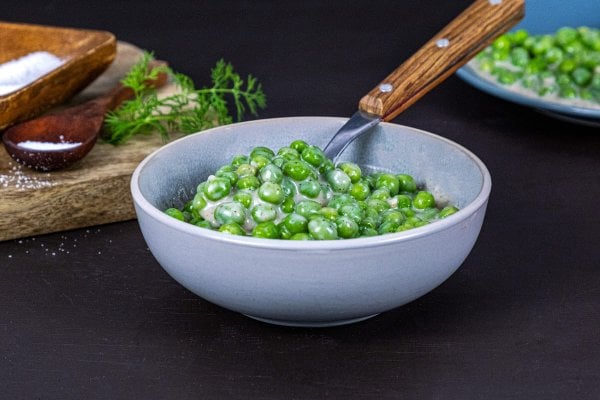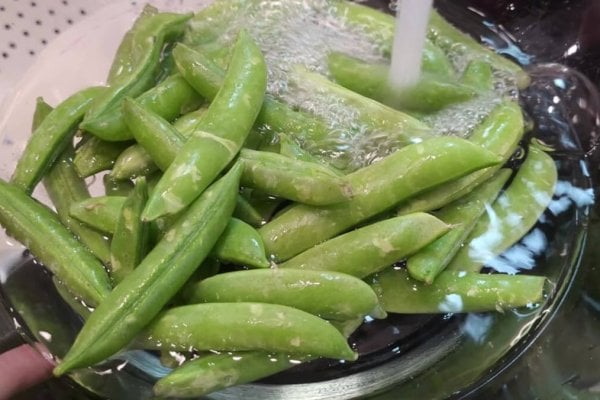
Dandelions are misunderstood as an unwelcome weed growing wild, but don’t kill it! Let dandelion grow in your backyard, and read on to learn dandelion uses, including parts from the root to the flower.

Why You Should Learn Dandelion Uses
Growing medicinal herbs in a thoughtfully planned cottage garden will provide you with what you need to learn how to use herbal medicinals at home.
Even if you don’t have room or the time to grow and dry herbs, you can still reap the benefits of what nature has produced for you. Learning how to forage wild plants is a valuable life skill everyone should know.
Foraging promotes the homesteading mindset of being resourceful in using what you already have available to you.
A few practical examples of foraging we participate in are wild berries (we have huckleberries in our area that are great in our quick and easy cobbler), yarrow for natural first-aid, and arnica flowers to make homemade arnica oil or homemade arnica salve.
Dandelions are often undervalued and overlooked as a foraging treasure. They can be extracted to make herbal tinctures, dried and ground for homemade herbal capsules, or used as a tea to make this delicious dandelion root tea latte.
It’s important to note that I am not a certified medical practitioner. This post is not intended to diagnose or treat but is for informational purposes only. Please contact your medical care professional before introducing new herbal remedies into your wellness routine.

Historical Dandelion Uses
- Documented history dating back to the Native American culture report using dandelion boiled in water to make dandelion tea beneficial for kidney, liver and gallbladder issues.
- Traditional Chinese medicine touts its ability to treat stomach conditions and episodes of appendicitis.
- Europeans have used it for fever, diarrhea and skin conditions.
- Modern herbalists use fresh or dried dandelion in herbal detoxes to help kidneys function and detoxify the liver and gallbladder. (Source)
- Dandelion leaves help the body flush out excess fluid (Source), aid digestion (Source), and may stimulate appetite. Some people even use dandelion roots as coffee substitutes and flower petals to make jelly or flavor wine.
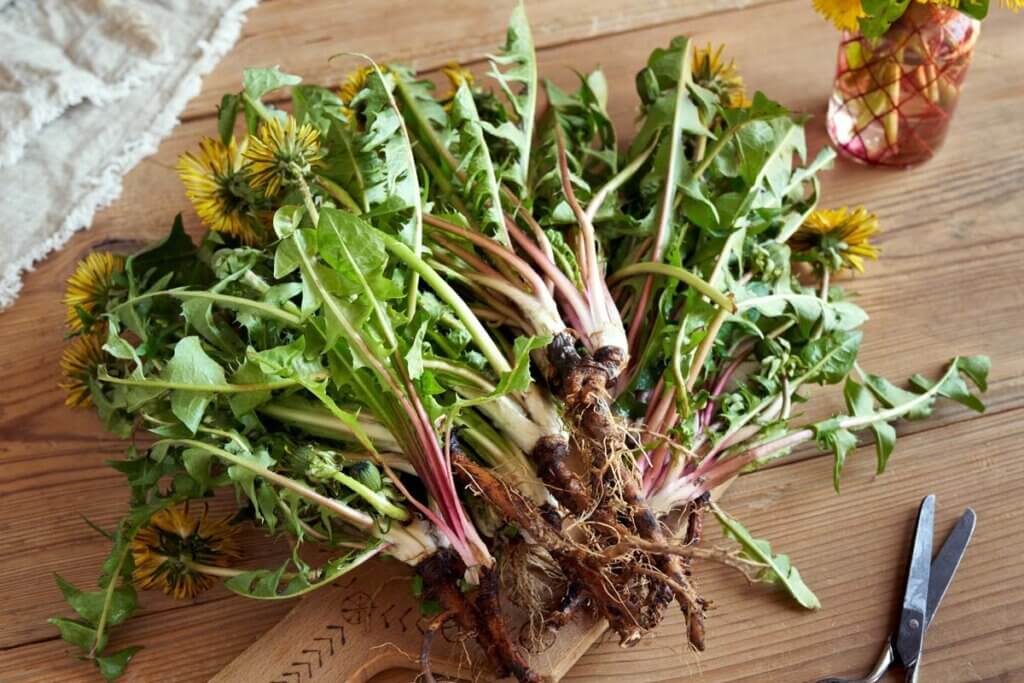
What Parts of the Dandelion Can Be Consumed
Dandelion has many uses because all plant parts are consumable. It’s important to remember that because dandelions are generally seen as weeds, the typical treatment is spraying with pesticides.
When foraging for dandelions, always make sure they grow in areas without harmful chemicals. Our family works hard to minimize our exposure to common environmental toxins. (Learn about our journey with glyphosate toxicity.)
Health Benefits of Dandelion
There are studies on how dandelion root extract affects health conditions, including protecting against liver disease, inhibiting cancer cells, lowering blood pressure, and controlling blood sugar levels. However, these studies have been tested on animals and need further human research.
While these are exciting possibilities, let’s consider what dandelion is known to do. (Source)
- Gut Health – Gut health is essential in supporting your immune system. Dandelion root is an excellent soluble fiber source acting as a prebiotic which feeds healthy gut bacteria.
- Inflammation – Chronic inflammation has become a common issue in this modern world. Like home-brewed kombucha, all parts of the dandelion contain polyphenols known to act as an anti-inflammatory in the body.
- Oxidative Stress – Dandelions contain antioxidants that neutralize damaging free radicals circulating in the body. A lowered free radical load is linked to protection against illness and disease.
- Superfood – Have you heard that spinach in your salad or green smoothie is a superfood? Try swapping it for dandelion greens and get more fiber, calcium, and Vitamins A, E, & K! Dandelion greens also provide a good iron, magnesium, and potassium source.
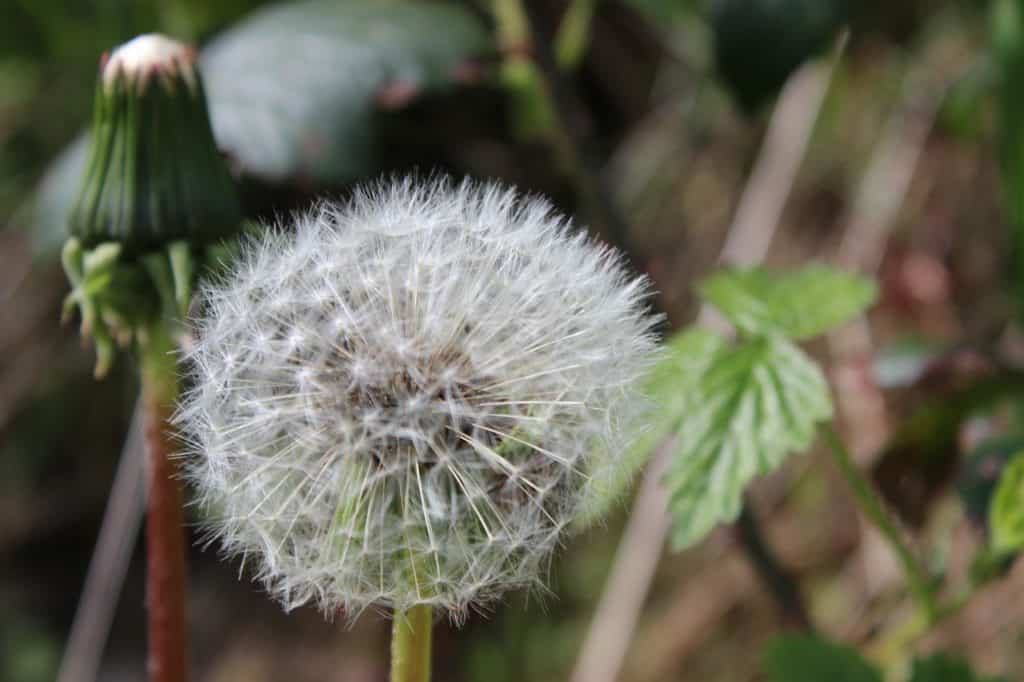
Who Should Avoid Taking Dandelion
With all herbal supplements, there can be an allergic reaction, or it can interact with a medication causing unwanted side effects. Generally, the dandelion plant is low toxicity and safe for most people.
When in doubt, or if you have allergies to other related plants such as ragweed, seek medical advice from your health care provider.

Ways to Use Dandelions
Because the entire plant is edible, dandelions offer various ways to use them.
Flower
You can eat the flower fresh in salads and soups and use them to make dandelion jelly, syrup, or infused honey. When dried, the flowers make a healthy tea, and you can infuse vinegar with the dried flowers to make a homemade vinaigrette.
Stem
Dandelion stems’ flavor can be off-putting, so many foragers will just put them in their compost pile. However, if you are looking for ways to eat the stems, you can improve the already nutritious dandelion stem by using fermentation as a preserving method.
Leaves
Dandelion leaves can be consumed fresh, boiled, sauteed, dried or raw. You can toss the greens into salads, mix in a green smoothie (or DIY dehydrated greens powder) or homemade stir fry recipe, top on a pizza, or mix in with your favorite sauteed greens with your preferred spices.
Root
You can chop the fresh dandelion root and cook it like carrots or parsnips. Dried dandelion root is commonly brewed as tea or mixed with chicory root to make a coffee alternative.
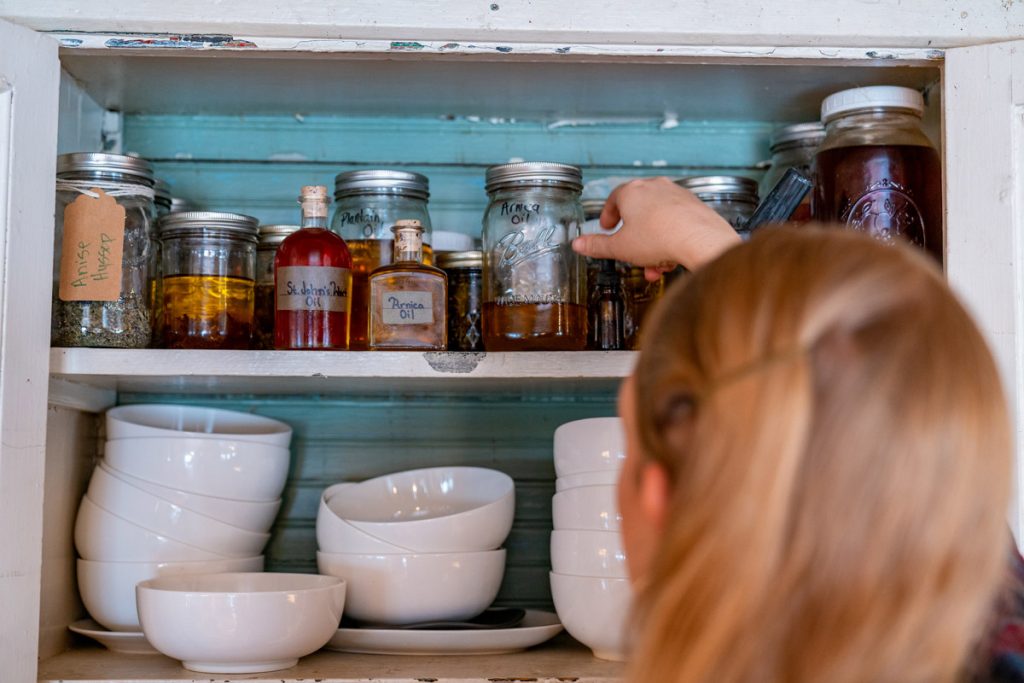
Using Herbal Remedies at Home
Using dandelions to promote health is a great way to start going “Off-Grid” with your healthcare. If you are ready to learn more about herbal remedies and start healing your family naturally, the Herbal Medicine Cabinet: Colds and Flu class is for you.
Sign up today, and learn how to stock your herbal medicine cabinet using simple herbs to safely, naturally and effectively treat your family this cold and flu season.

Other Articles You May Enjoy
- 15 Medicinal Herbs To Grow & Their Common Uses
- How to Boost Your Immune System Naturally
- Homemade Dandelion Root Tea Latte
- Homemade Antibiotic Ointment (Better Than Neosporin)
- Herb Capsules – How to Make Your Own
- How to Make Homemade Arnica Oil
- Building a Home Apothecary
- How to Use Herb Medicine at Home











